Crafting a stone walkway can transform any outdoor space into an inviting, picturesque pathway that complements your landscape’s aesthetic and functionality. From timeless flagstone arrangements to innovative mosaic designs, these ideas showcase a variety of materials, layouts, and installation techniques to suit different styles, budgets, and skill levels. Whether you prefer the rustic charm of fieldstone, the sleek lines of cut pavers, or the whimsical appeal of mosaic inlays, there’s a stone walkway concept here to inspire your next DIY or professional hardscaping project. Explore these 20 detailed ideas to find the perfect stone pathway solution for your garden, yard, or front entrance.
1. Flagstone Stepping Stone Path

A flagstone stepping stone path features irregularly shaped slabs set loosely in turf or gravel, creating a natural, cottage-style feel that seamlessly integrates with surrounding greenery. The irregular edges and varied textures of flagstone allow grass or moss to grow between pavers, softening the hardscape and enhancing the organic look. This installation requires minimal excavation: simply level the ground, add a thin layer of sand, and place stones in a desired pattern. Maintenance is straightforward—mowing over the stones keeps surrounding grass tidy while occasional weeding preserves the pathway’s charm.
2. Gravel and Stepping Stone Hybrid
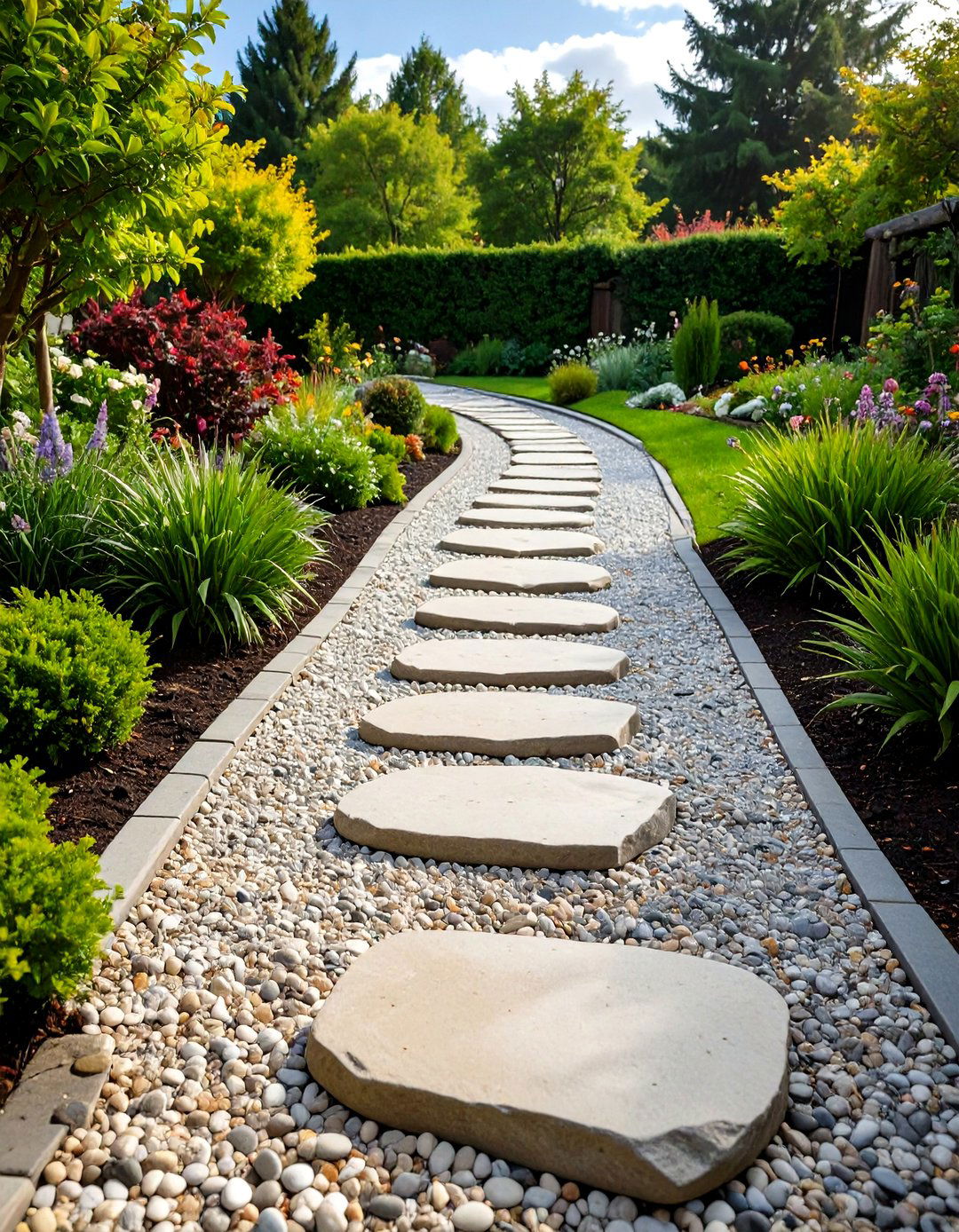
Combining gravel with stepping stones offers both visual interest and practical drainage, making it ideal for wetter climates. Lay larger stepping stones at walking intervals and fill the gaps with decorative gravel or crushed stone to create a textured contrast and a stable walking surface. This hybrid approach allows water to percolate easily, reducing puddling and surface run-off, and the loose gravel can be refreshed or topped up as needed. Use border edging to contain the gravel and define the path’s clean lines for a polished finish.
3. Cobblestone Arch Path

Cobblestones arranged in a gentle arch pattern evoke Old-World charm and are exceptionally durable under foot traffic. The arch—or herringbone—pattern interlocks stones to distribute weight evenly, minimizing shifting over time. Installation involves a compacted sand or gravel base, followed by precise stone placement and sand filling between joints for stability. Cobblestone paths also pair well with low groundcover plantings or edging plants like lavender to soften harsh lines and add fragrance.
4. Random Slate Flagstone Path
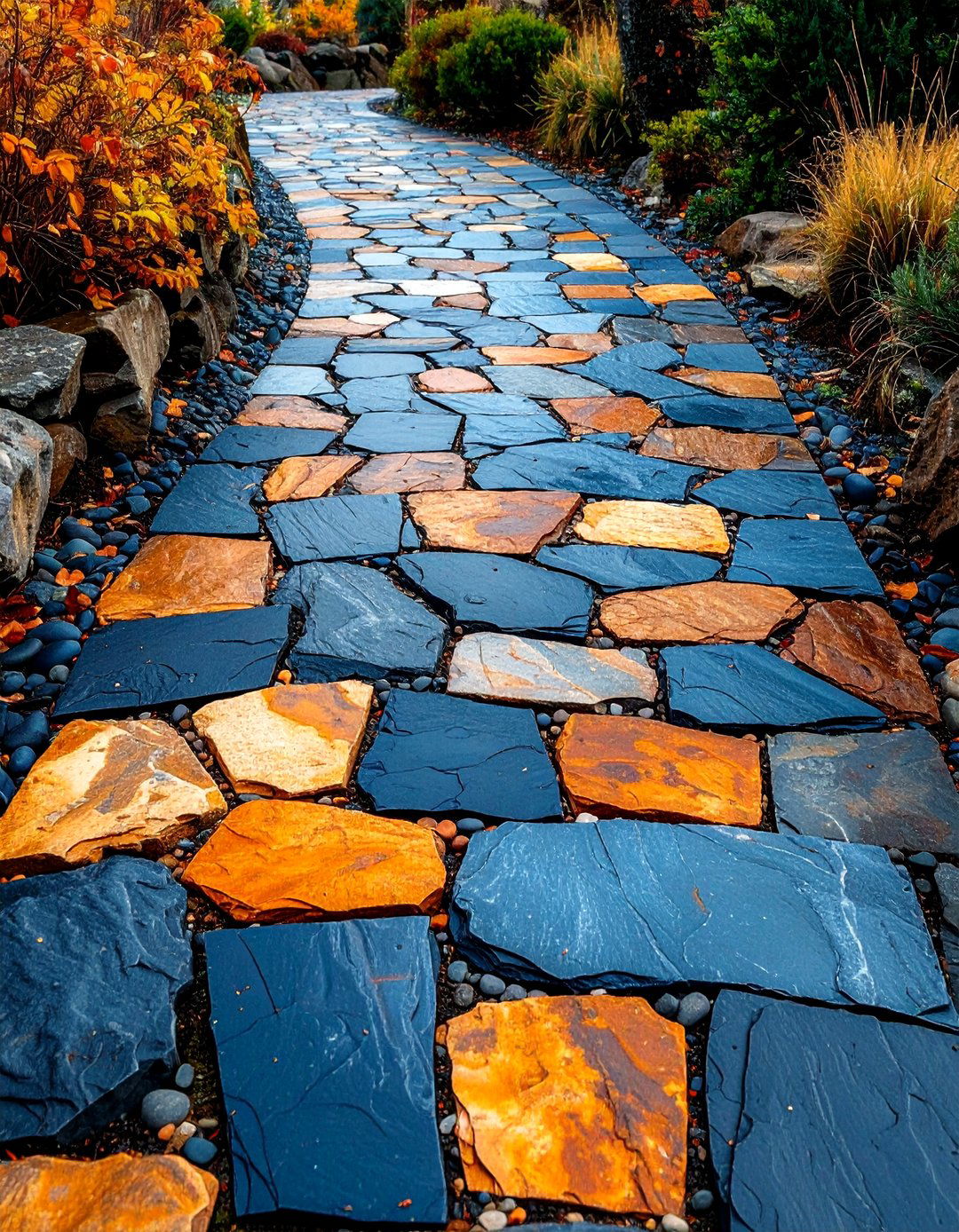
Random-cut slate flagstones create striking color variation—from deep blues to rust hues—and form an irregular, organic path shape. This approach highlights each stone’s unique veining and texture, perfect for contemporary or rustic settings. To install, lay stones directly on compacted sand, adjusting each piece for a flush fit, then grout joints with sand or mortar for added durability. The smooth, flat surfaces of slate also provide reliable traction, even when wet.
5. Geometric Cut Stone Path
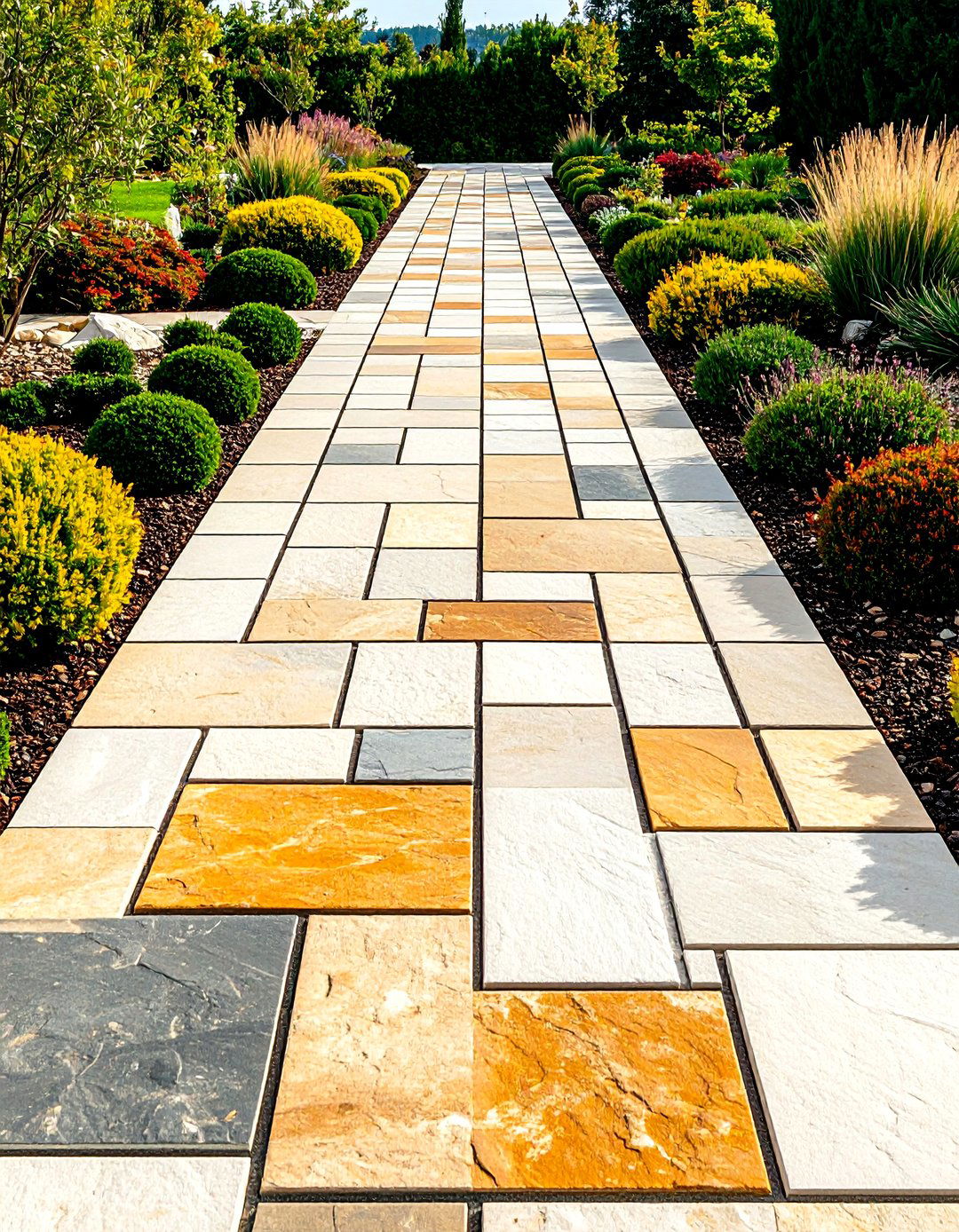
Clean lines and precise shapes define geometric paths using rectangular or square cut pavers, offering a modern, minimalist aesthetic. Materials such as limestone or bluestone can be factory-cut to uniform sizes, enabling crisp layouts like staggered grids or linear sequences. Underlay these pavers on a leveled base of compacted aggregate and sand, then fill joints with polymeric sand to lock stones in place. The result is a sleek, low-maintenance surface that complements contemporary architecture.
6. River Rock Border Path
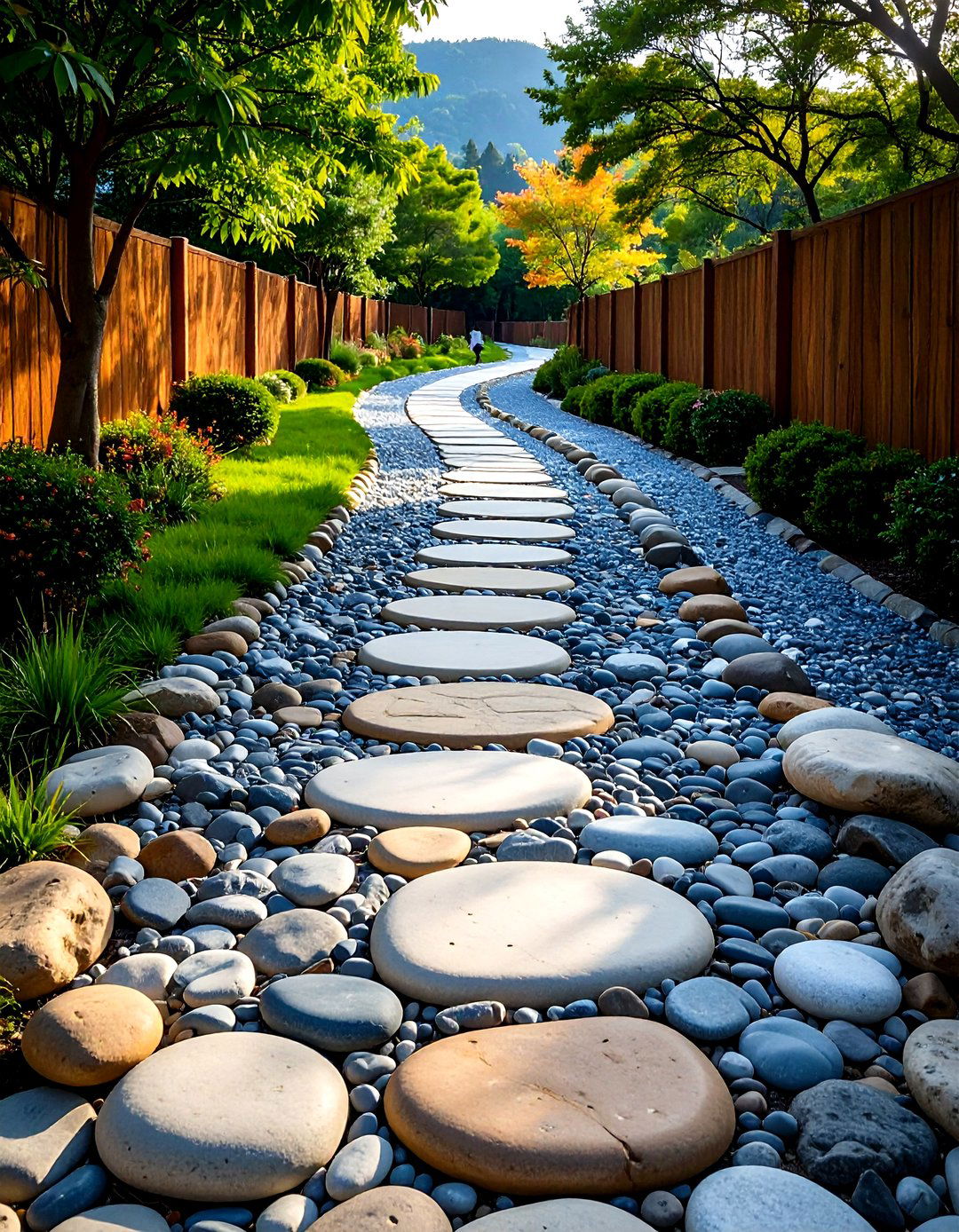
Framing a central stone walkway with rounded river rocks adds textural contrast and a polished, finished appearance. River gravel—small, smooth stones—can be set in concrete or placed loosely alongside a paved path to create a decorative border. The rounded edges of river rocks reduce tripping hazards and encourage rainwater infiltration, reducing erosion. Choose multi-colored mixes for a mosaic-like effect or uniform hues for a refined, cohesive look.
7. Moss Between Stones Path

Allowing moss or creeping groundcover to fill gaps between irregular stones creates a lush, enchanted garden walkway. This green inlay softens stone edges, retains moisture, and naturally suppresses weeds. For best results, use stones with slight indentations to cradle moss, and ensure partial shade and moist soil to support growth. Maintenance involves occasional trimming and watering during dry spells to keep the moss vibrant.
8. Granite Paver Path
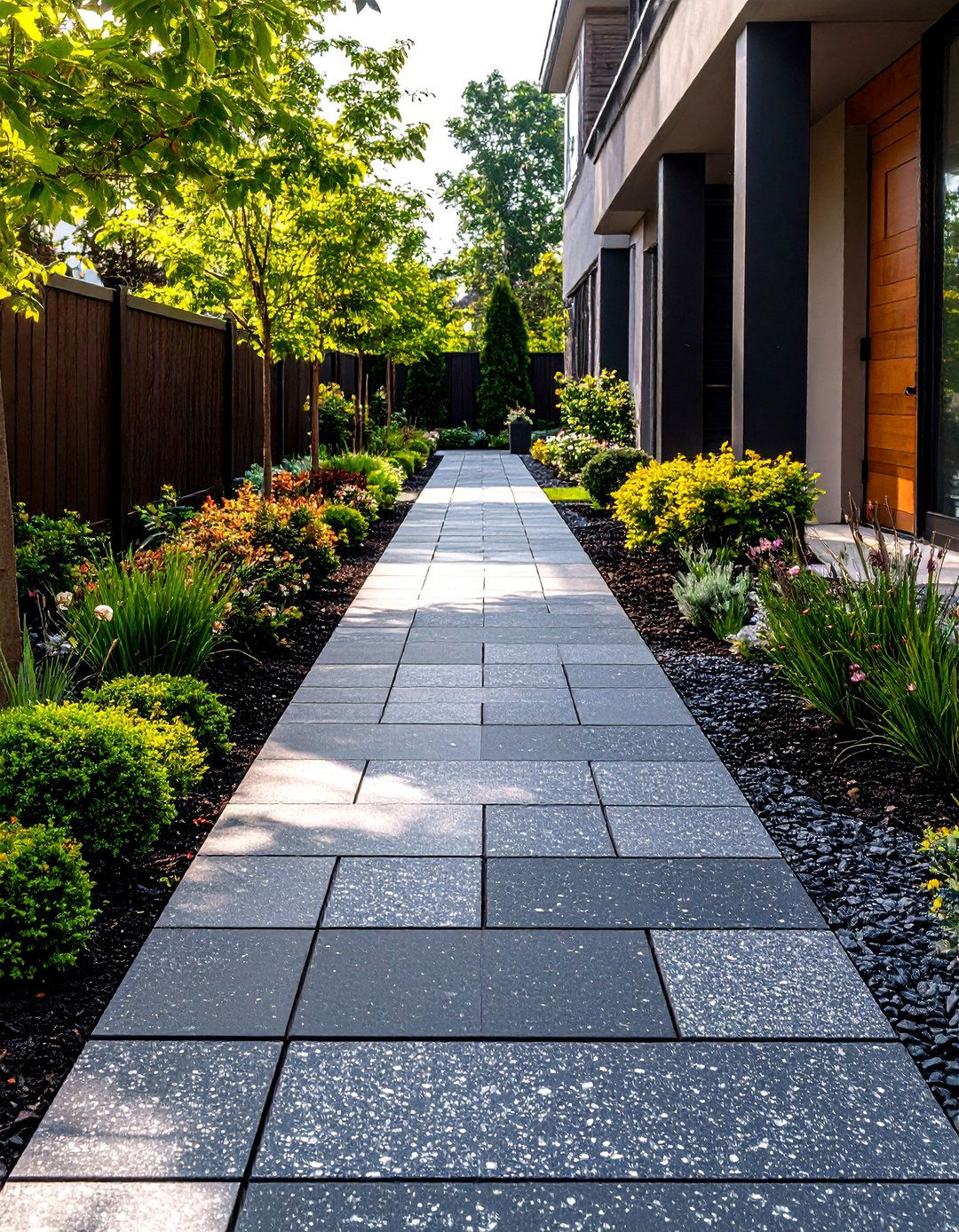
Granite pavers offer exceptional hardness and wear-resistance, ideal for high-traffic areas like driveways or main walkways. Their speckled surfaces and natural color variations—from silver to black—provide a refined, upscale look. Install on a compacted gravel base with sand bedding, and fill joints with fine sand or mortar for a smooth, stable surface. Granite’s density also makes it slip-resistant when textured finishes are used.
9. Travertine Paver Path
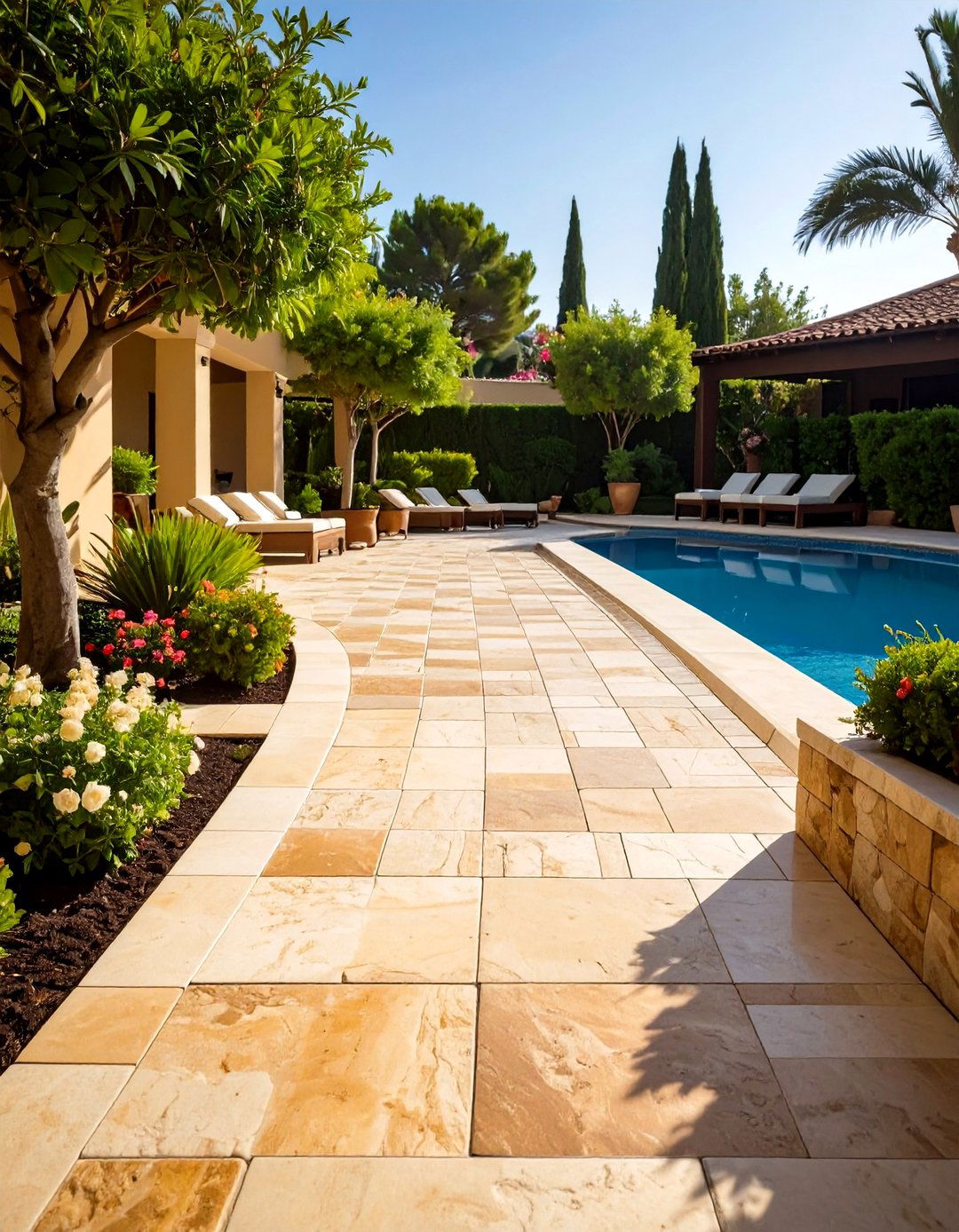
Travertine, a type of limestone, brings warm hues—ivory, gold, and brown—to pathways with a characteristic porous texture. This stone stays cool underfoot, making it ideal for sunny climates and pool surrounds. The pavers can be honed for a smooth finish or tumbled for an aged appearance; either way, they install like other cut pavers over a sand or mortar bed. Regular sealing helps prevent staining and preserves color vibrancy.
10. Sandstone Stepping Path

Sandstone’s warm, earthy tones and slightly rough texture make it perfect for natural-style stepping paths. Use large, flat slabs laid with generous spacing to allow grass or groundcover to grow between pieces, creating a soft, inviting walkway. A thin bed of sand beneath each slab ensures stability without the need for mortar. Seal slabs to reduce erosion of the natural surface and maintain color contrast.
11. Marble Chip Inlay Path
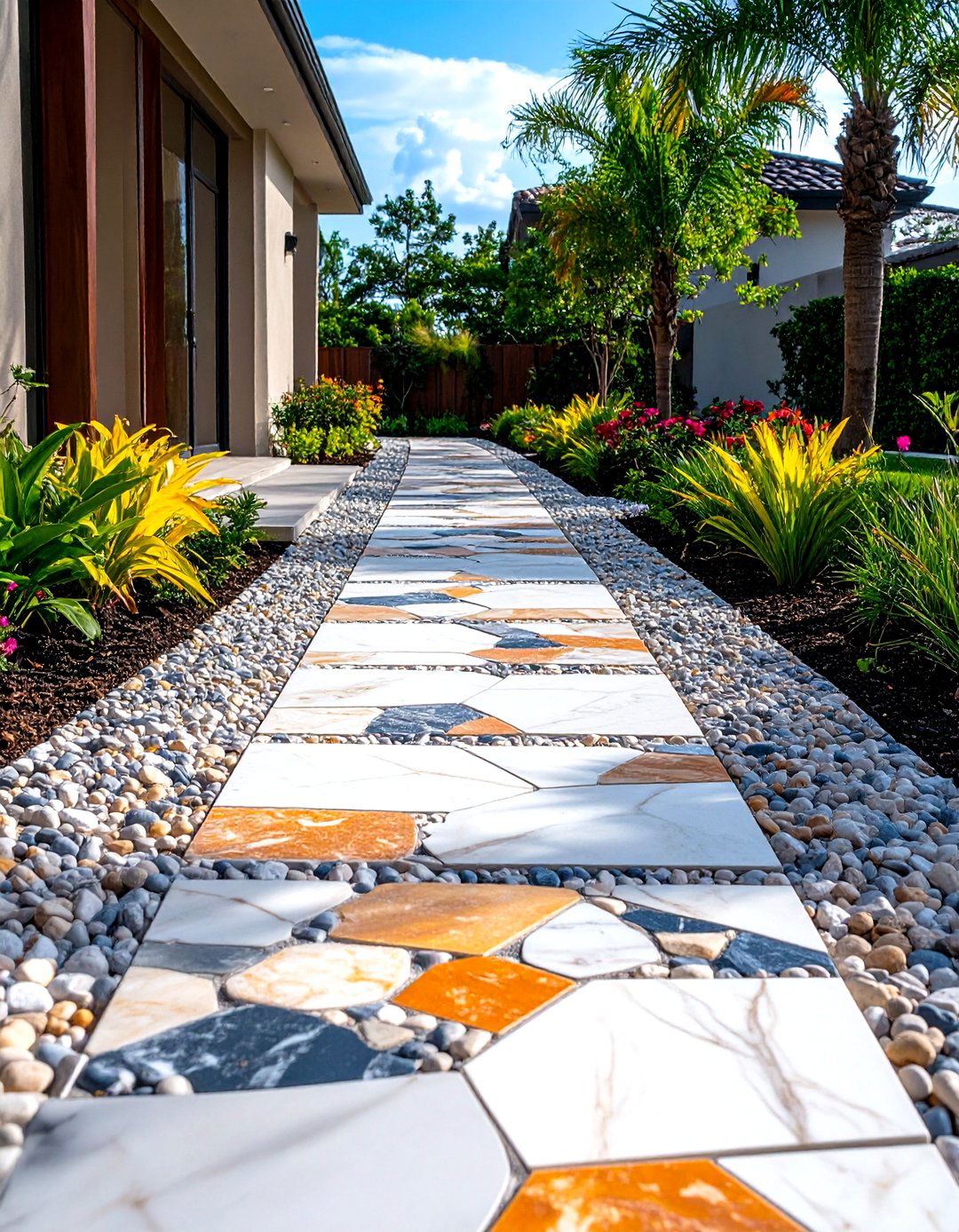
Inlaying marble chips—a byproduct of marble cutting—into poured concrete creates a decorative aggregate finish with shimmering accents. After the concrete is poured, chips are broadcast over the surface and then lightly troweled to embed them, revealing a polished, terrazzo-like look. This technique allows for custom color mixes and patterning, and the smooth finish is slip-resistant when sealed properly.
12. Fieldstone Rustic Path
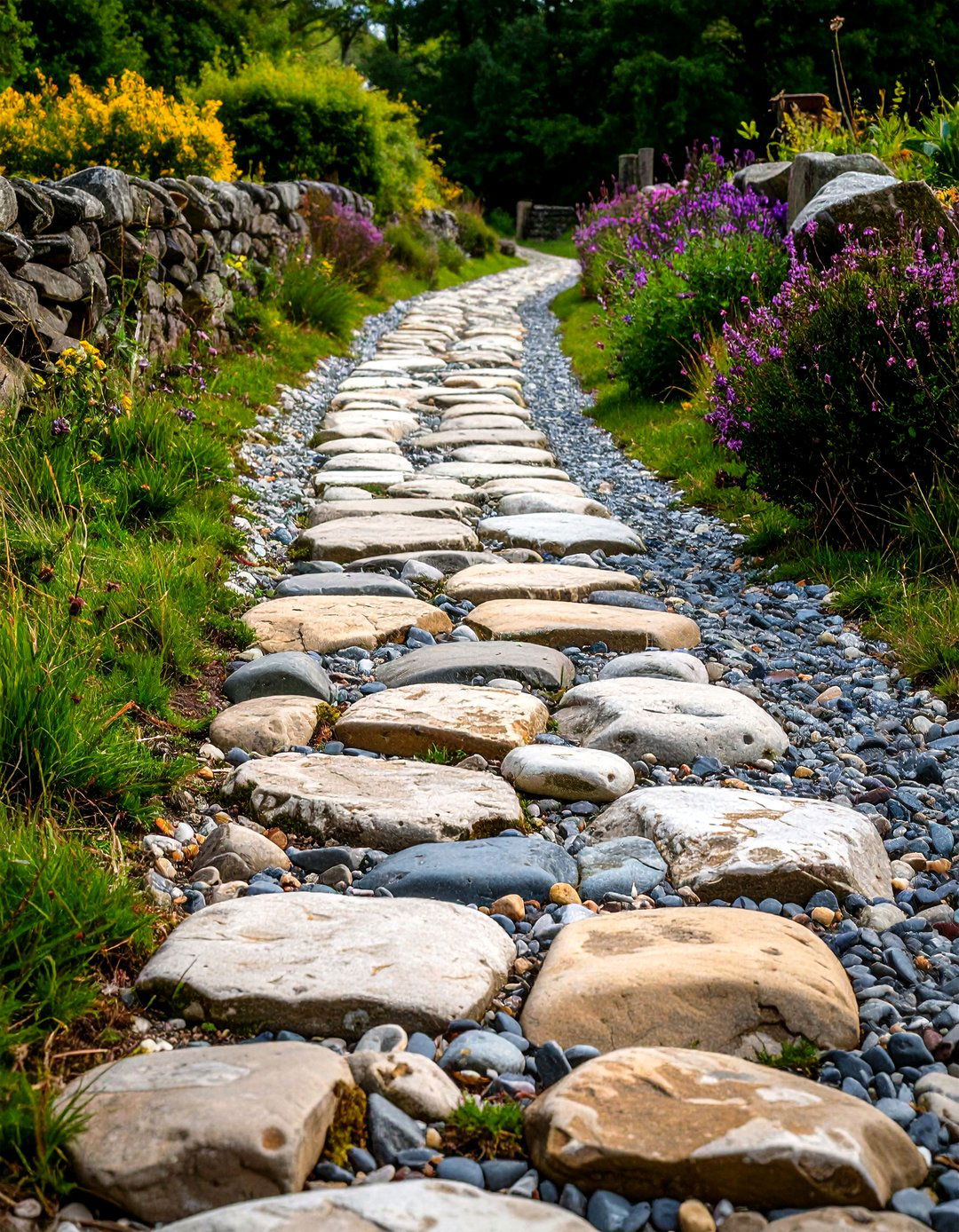
Fieldstones—large, irregular stones gathered from quarries or fields—lend a rugged, time-worn appearance to garden paths. Lay these hefty stones on a compacted gravel base, fitting them tightly together like puzzle pieces, then fill gaps with gravel or sand. The result is a sturdy, durable path that weathers naturally, ideal for country or woodland gardens. Over time, lichen and moss may colonize the stones for added rustic charm.
13. Limestone Stepping Path
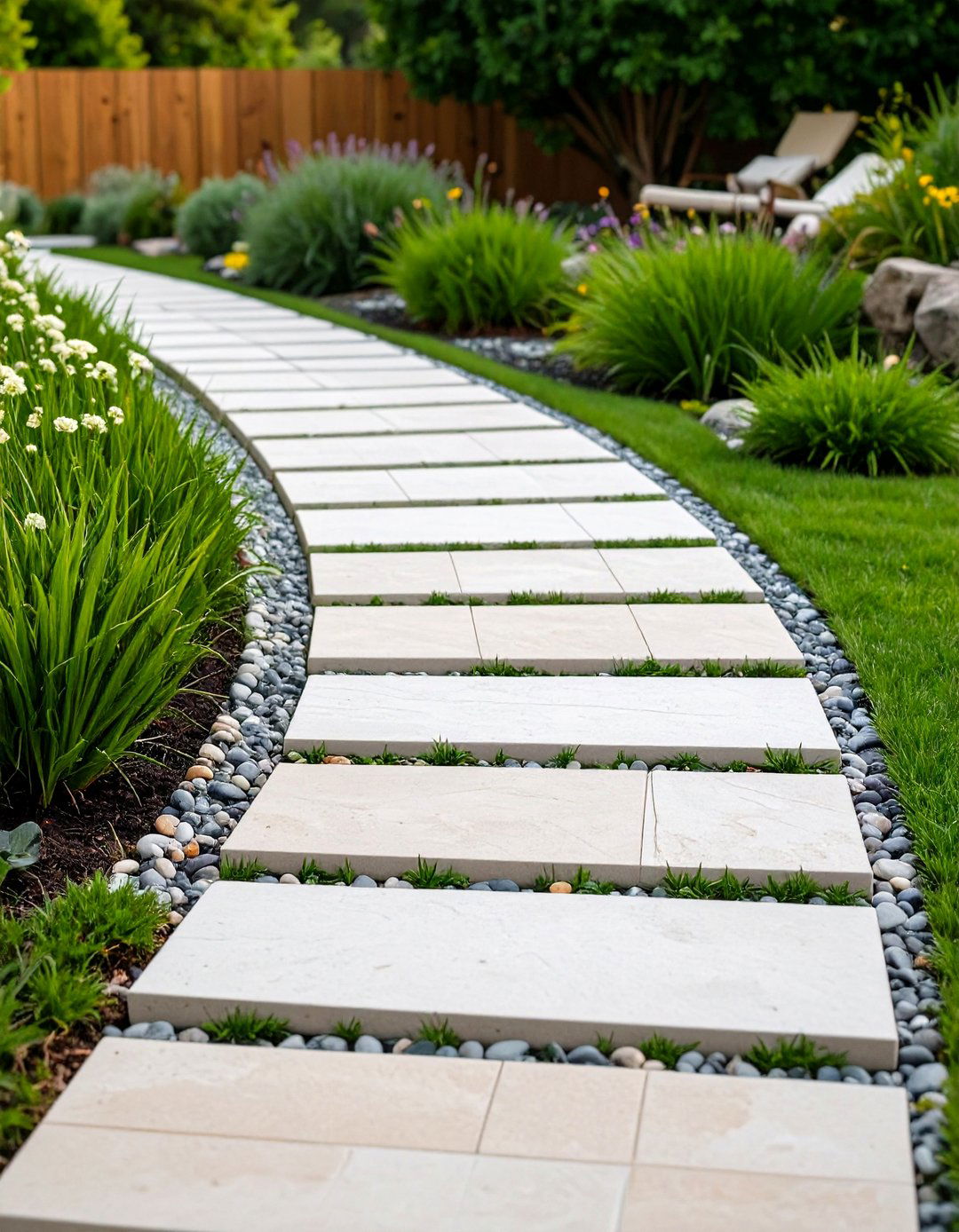
Cut limestone pavers offer a pale, neutral palette that brightens shaded garden areas. The soft texture and muted hues of limestone blend well with ornamental grasses and border plantings. Install on a layer of sand atop compacted aggregate, spacing pavers to encourage foliage growth between slabs. Periodic resealing protects against staining and weathering, preserving the stone’s subtle beauty.
14. Broken Paver Mosaic Path

Repurpose broken pavers or tiles to create a colorful mosaic pathway, arranging fragments in random or deliberate patterns for a playful, artistic look. Set pieces into mortar on a concrete base or directly into compacted sand, then grout joints to secure each fragment. This DIY-friendly technique makes use of leftovers or reclaimed materials, reducing waste and allowing infinite creative expression.
15. Concrete and Stone Mix Path
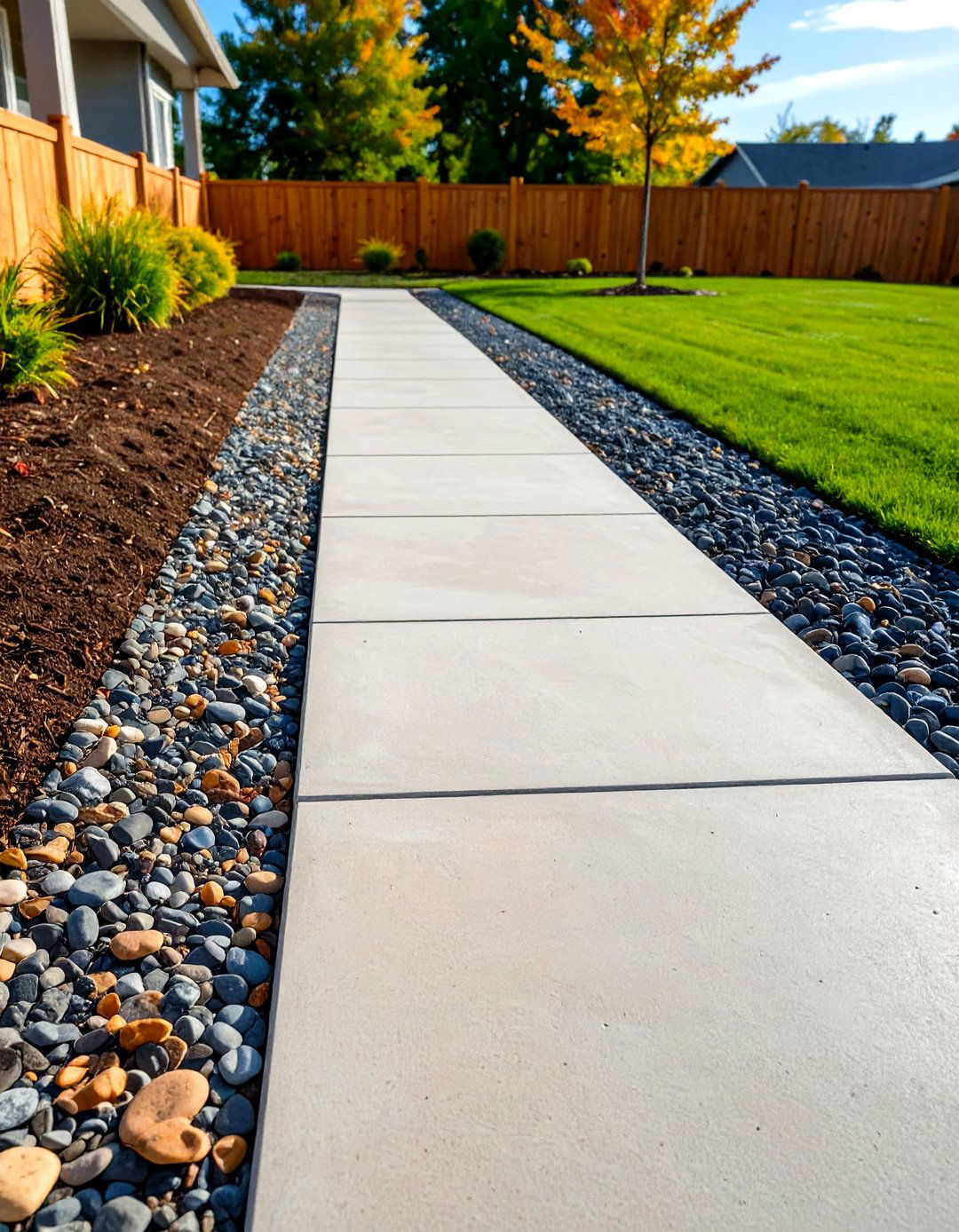
Embedding varied stone sizes—pebbles, chip aggregates, and small boulders—into poured concrete yields a rugged, slip-resistant surface that showcases texture diversity. After pouring, expose the aggregate by washing away surface cement, revealing a durable, decorative finish. This method is suitable for curved or sloped paths, offering both structural integrity and visual interest.
16. Brick and Stone Border Path
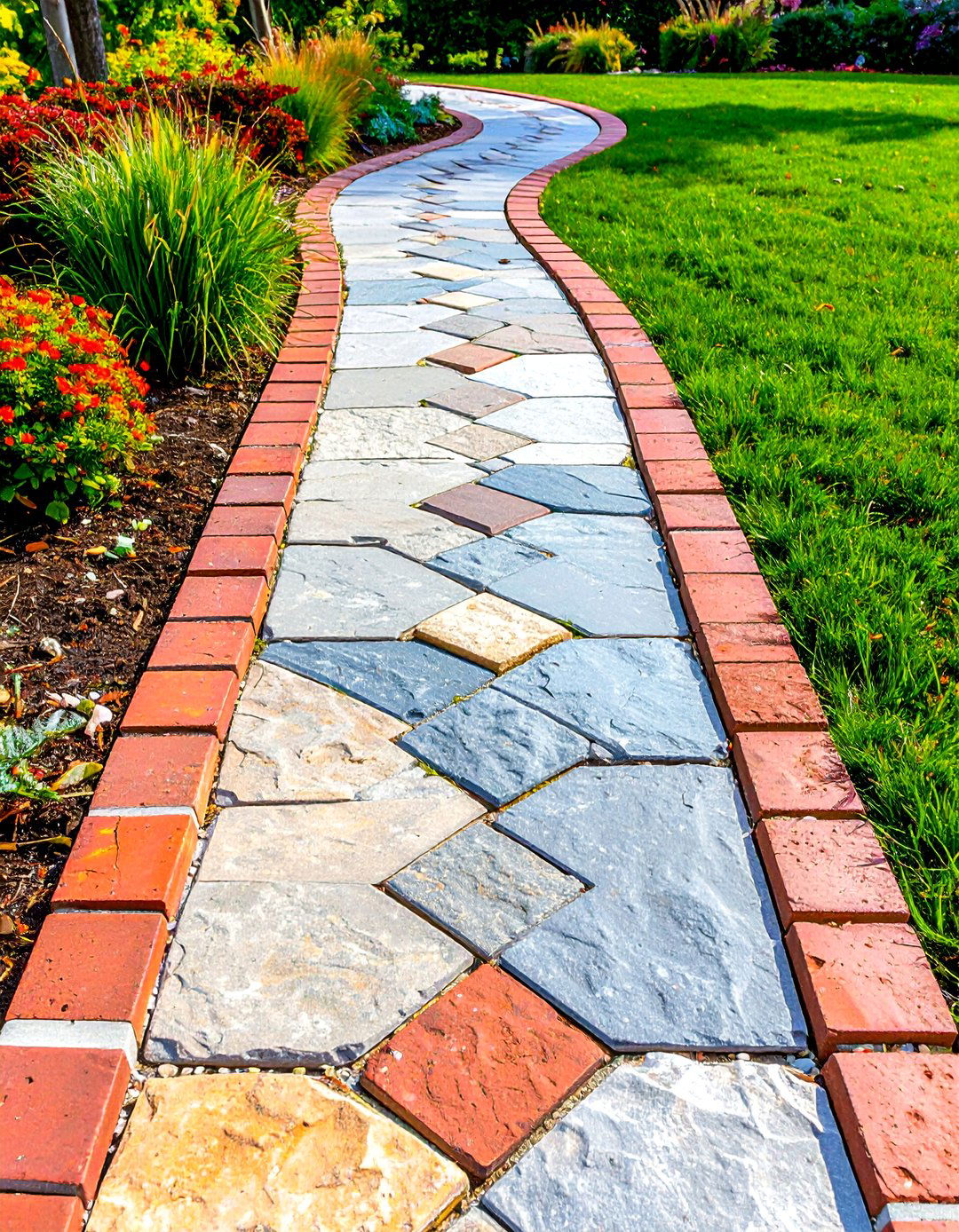
Combine classic brick with natural stone for walkways that feature a contrasting border—brick edge for definition and stone center for texture. Lay a soldier course of brick around the path perimeter, then fill the interior with gravel, pebbles, or flagstone. This hybrid design provides clear visual delineation and prevents stone edge displacement. Decorative brick patterns, like herringbone, add an extra layer of sophistication.
17. Stone Steps Through Slope
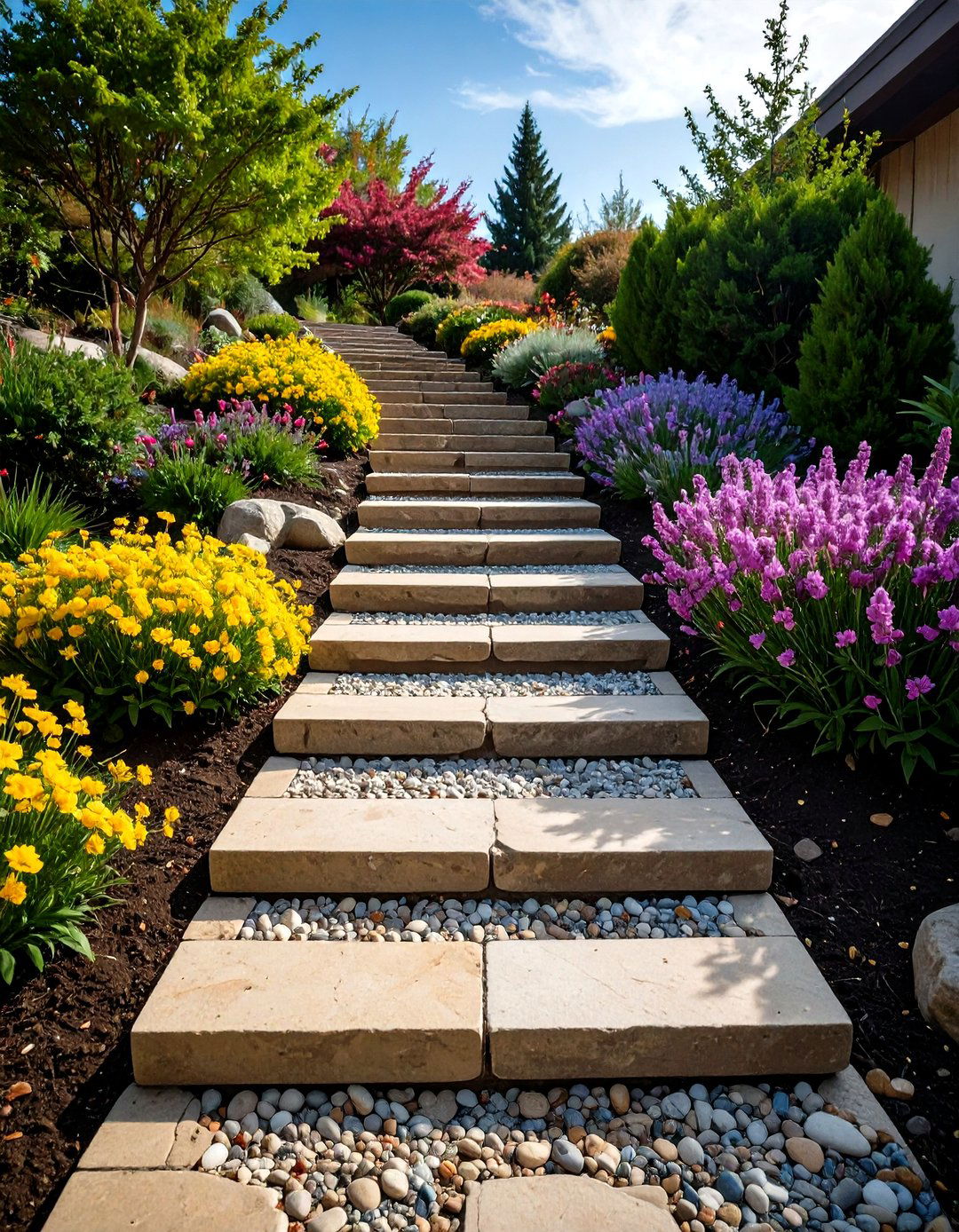
Integrate stone steps into a sloping landscape to create a functional, tiered pathway that follows natural contours. Use thick, flat stones embedded into the earth for treads, with gravel or mulch fill between steps for drainage. This design minimizes erosion, provides secure footing, and adds architectural interest to otherwise steep terrain. Edge steps with low-lying plants or groundcover to blend the installation into the hillside.
18. Multi-Size Rock Path
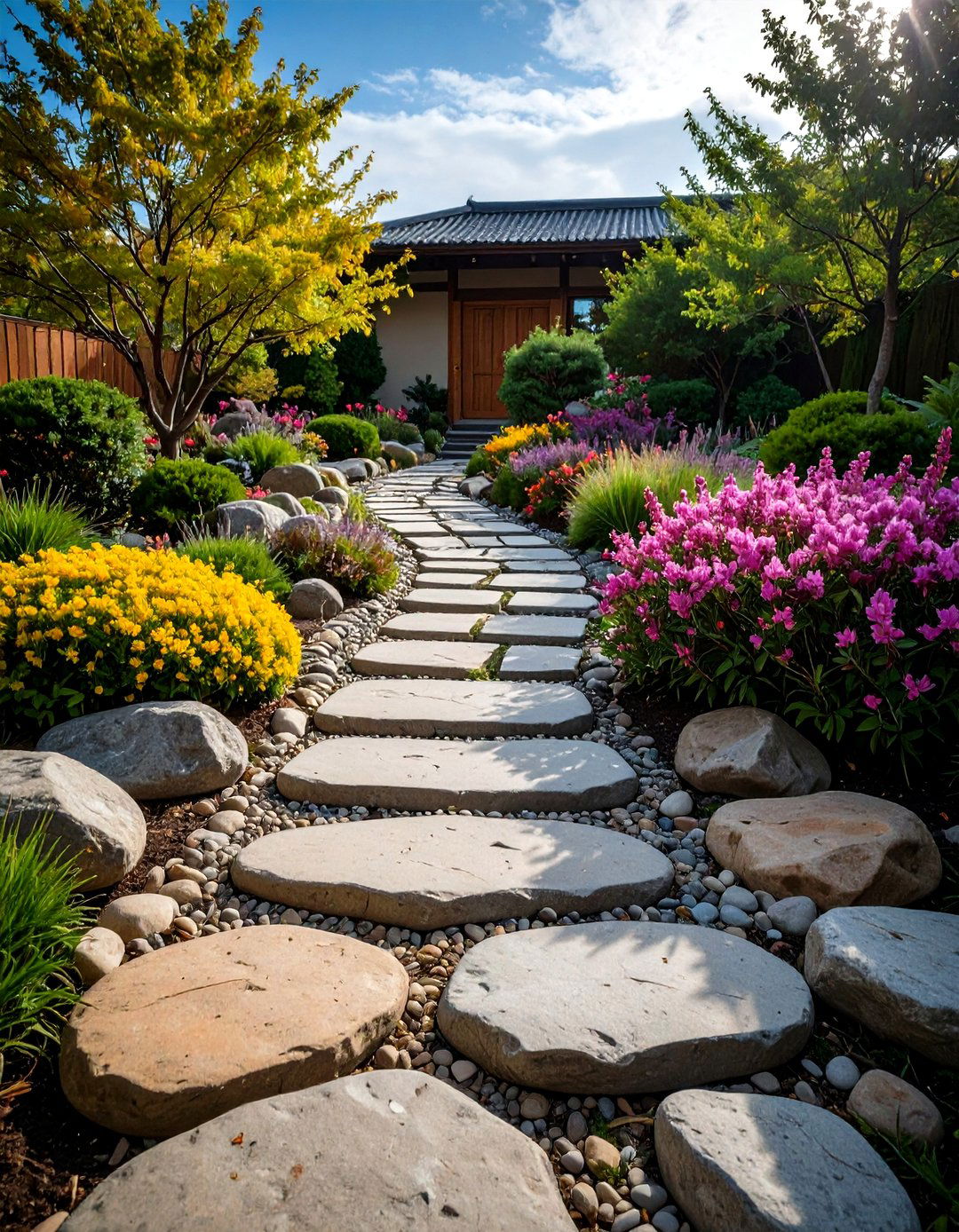
Mix large stepping stones with smaller accent rocks to craft a dynamic path featuring varied scales and textures. The smaller stones fill voids around larger slabs, creating a cohesive yet intricate pattern that guides the eye along the walkway. Install on a compacted base with joint filling to stabilize stones, and consider drought-tolerant groundcovers to further integrate the design.
19. Pebble Inlay Stepping Path
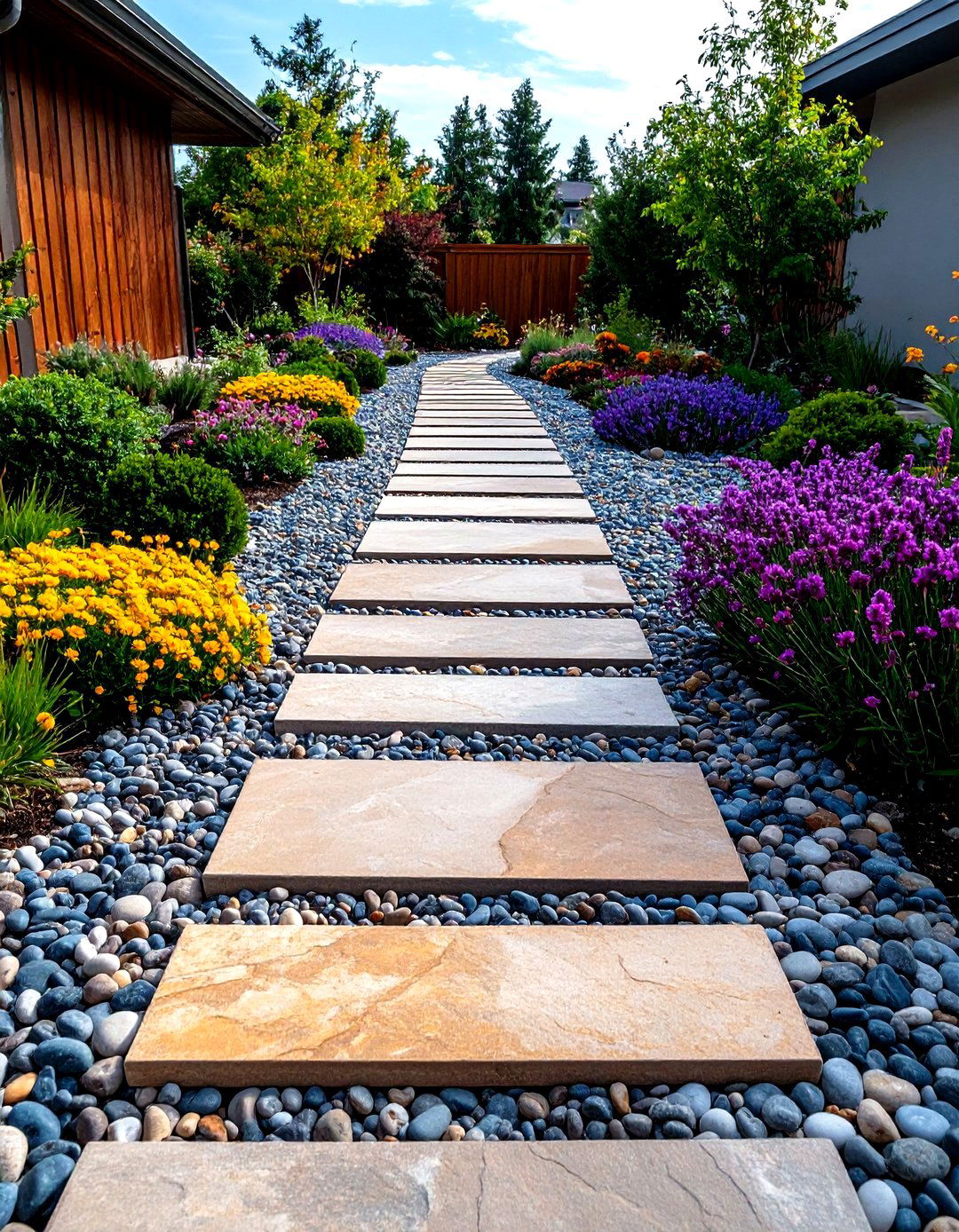
Embed flat stepping stones into a bed of decorative pebbles for a refined look with uniform contrast. The pebbles cradling each slab create visual definition, while the smooth texture underfoot is comfortable and stable. Use edging to contain pebbles, and choose contrasting colors—white pebbles with dark slate, for example—for maximal impact.
20. Circular Stone Medallion Path

At focal points such as garden entrances or patio thresholds, install circular stone medallions surrounded by a radial pattern of flagstones or pavers. This ornate design draws attention and creates a sense of arrival, with concentric rings offering endless material and color combinations. Precision cutting and placement are required, but the resulting centerpiece adds architectural drama to any pathway.
Conclusion:
Stone walkways offer endless versatility in material selection, layout, and installation techniques, allowing you to craft paths that reflect your personal style, landscape context, and functional needs. Whether you opt for rustic fieldstone, sleek cut pavers, or artistic mosaics, proper base preparation and maintenance ensure longevity and performance. From whimsical moss-lined stepping stones to grand circular medallions, these 20 ideas provide inspiration for enhancing curb appeal, garden flow, and outdoor enjoyment. Armed with this guide, you can embark on a stone walkway project—DIY or professional—with confidence, knowing you’ve explored the most creative and durable design options.


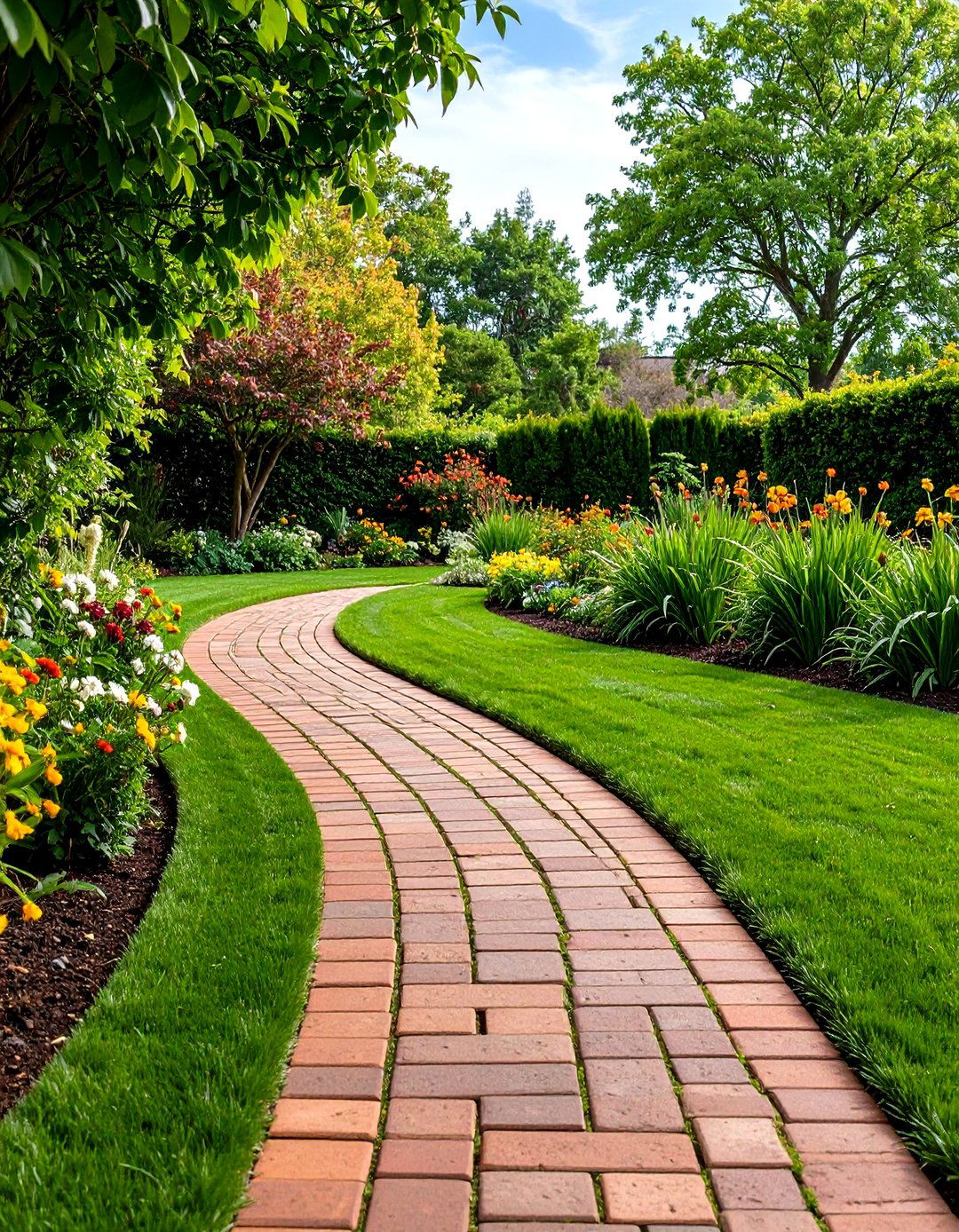



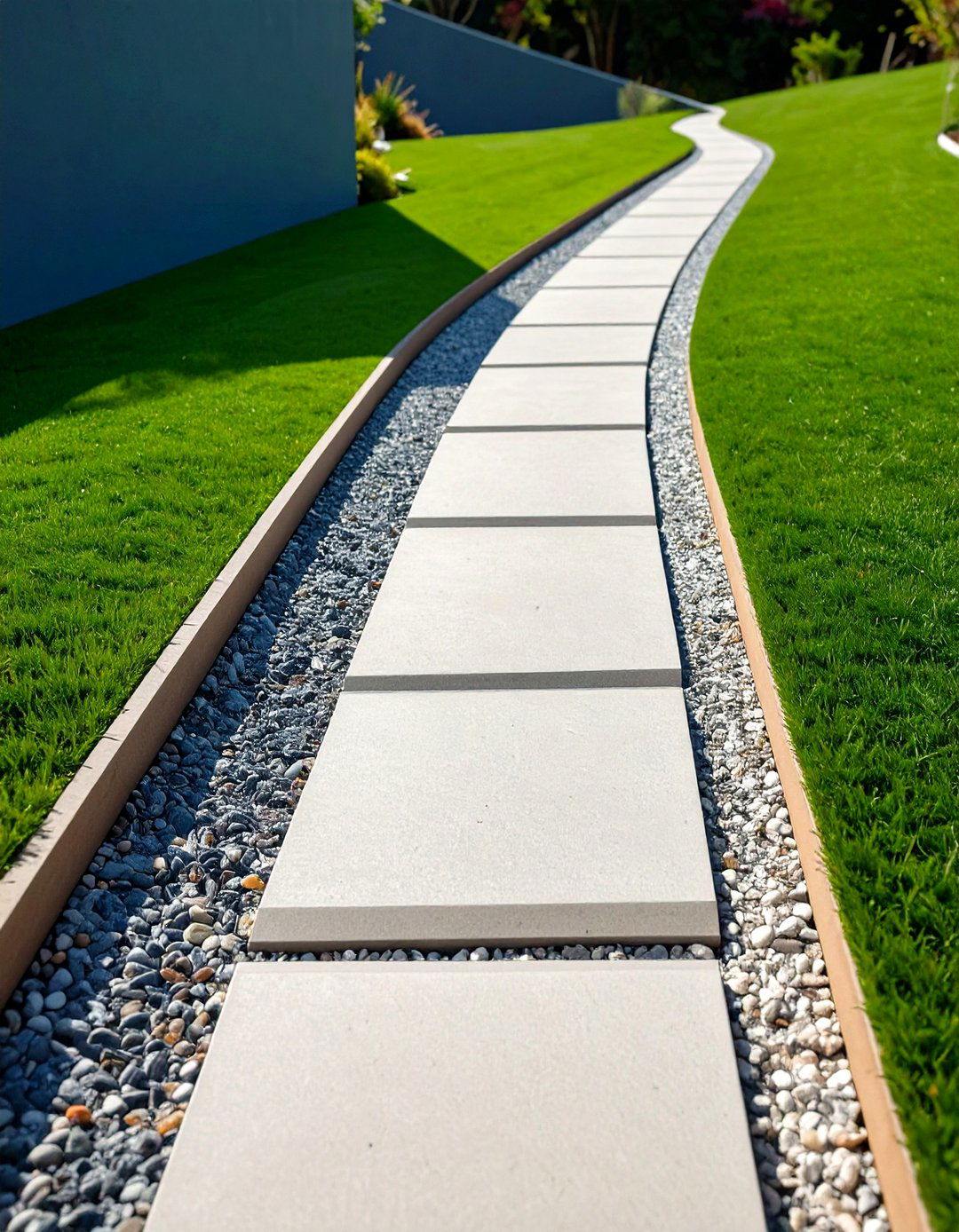






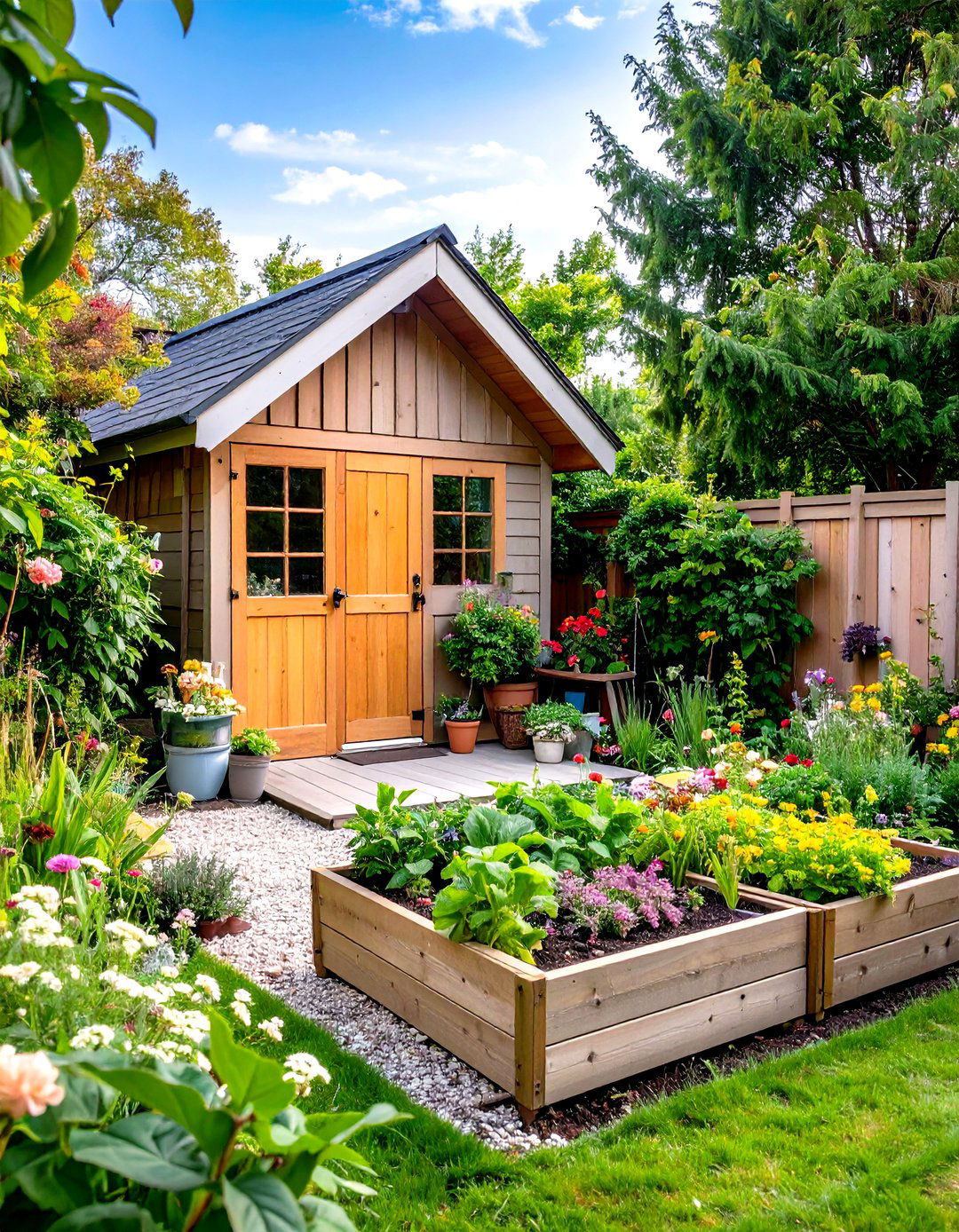



Leave a Reply